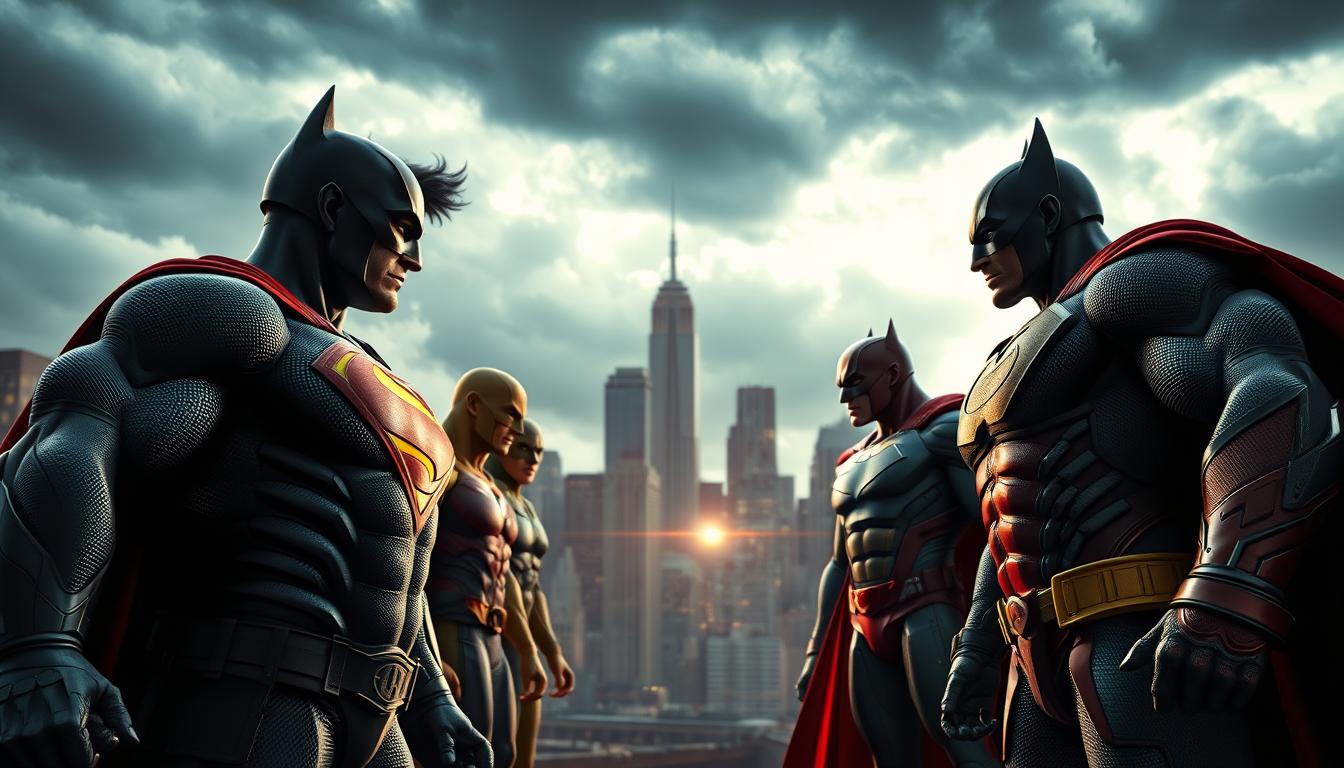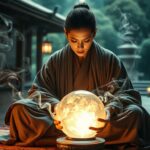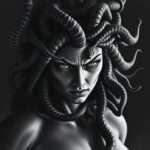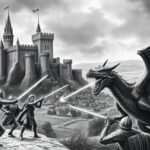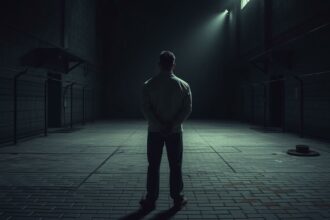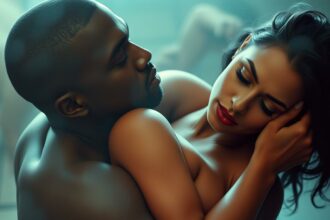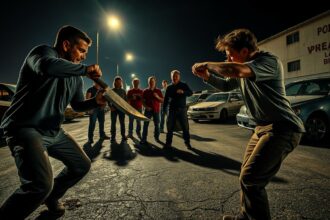For nearly a century, two titans have dominated the superhero landscape. Their rivalry has shaped pop culture, inspiring films, merchandise, and endless debates. Which universe reigns supreme?
The clash between these giants isn’t just about comic book sales. It’s a battle of philosophies—dark realism versus optimistic heroism. Fans passionately defend their favorites, from Gotham’s brooding vigilantes to Earth’s mightiest defenders.
Exclusive insights from Dynamic Duel Podcast host Johnny DC reveal untold stories. «The 1996 crossover changed everything,» he says. «It wasn’t just ink on paper—it defined a generation.»
Today, the competition extends beyond panels. Box office numbers and critical acclaim fuel the fire. Yet, one thing’s clear: this rivalry isn’t ending soon.
Introduction: The Rivalry That Defined a Genre
Few moments in pop culture history sparked as much debate as the ‚DC vs Marvel‘ showdown. For many, the 1996 crossover wasn’t just a series—it was a rite of passage. A poster from that time hung over bunk beds, turning casual readers into lifelong fans.
Some discovered Superman’s death and rebirth, a storyline that redefined heroes. Others debated the core philosophies: mythic legends versus grounded characters. Johnny DC, host of Dynamic Duel Podcast, put it bluntly:
«Heroes should be aspirational, not relatable.»
The clash extended beyond comics. From WWII propaganda to viral TikTok trends, these universes shaped generations. The 1996 event proved one thing—this rivalry wasn’t just about characters. It was about legacy.
The Origins: How DC and Marvel Shaped Comics
The birth of modern superheroes began with a single leap in 1938. Action Comics #1 introduced Superman, a publisher’s gamble that became the blueprint for the genre. Overnight, the comic books industry shifted—heroes weren’t just adventurers; they were legends.
DC Comics: Pioneers of the Superhero
Founded in 1935 as National Allied Publications, DC’s early years redefined pop culture. The Man of Steel’s debut wasn’t just a hit—it sparked a Golden Age. By 1940, Batman and Wonder Woman joined the roster, cementing DC’s mythic approach.
Editor Julius Schwartz later rebooted heroes with sci-fi twists. «We made them gods among men,» he once said. But Marvel had other plans.
Marvel Comics: The House of Ideas
In 1961, Stan Lee answered DC’s Justice League with the Fantastic Four. These heroes had flaws—family squabbles, money troubles—rooted in the United States’ postwar realism. «Heroes shouldn’t be perfect,» Lee argued. The Silver Age was born.
Behind the scenes, legal wars raged. A publisher dispute over Captain Marvel’s name revealed how high the stakes were. Yet fans won—the rivalry fueled creativity, not just courtrooms.
Iconic Heroes and Villains
Legends aren’t born—they’re forged in ink and imagination. For decades, superheroes and their foes have defined pop culture’s moral compass. Their stories reveal more than power; they mirror our fears, hopes, and flaws.
DC’s Trinity: Legends in Capes
Superman’s 1939 origin revealed a truth: even gods grieve. His Kryptonian parents’ death contrasted sharply with Spider-Man’s Uncle Ben tragedy—one a cosmic loss, the other street-level heartbreak.
Batman’s utility belt (debuted 1939) symbolized preparation over superpowers. Meanwhile, Wonder Woman’s lasso didn’t just bind villains—it shattered stereotypes. Her feminist legacy predated the X-Men’s civil rights allegory by decades.
Marvel’s Flawed Protectors
Iron Man’s tech addiction mirrored Batman’s trauma, but with a twist: Tony Stark’s armor hid self-destruction. As explored here, his playboy persona masked deeper struggles.
The X-Men fought prejudice, while Spider-Man’s «great responsibility» mantra made him relatable. Marvel’s heroes weren’t ideals—they were neighbors.
Villains: Chaos vs. Order
The Joker’s psychological terror clashed with Thanos’ galactic scale. One ruled Gotham’s shadows; the other wielded infinity stones. Merchandise sales favored Thanos post-Endgame, but the Joker’s unpredictability kept fans hooked.
- Joker: Anarchy with a smile.
- Thanos: Cosmic balance at any cost.
World-Building: Universes Compared
Imagination knows no bounds when crafting entire universes. The world of superheroes thrives on intricate settings—whether mythic kingdoms or gritty city streets. These landscapes aren’t just backdrops; they define heroes and villains alike.
DC’s Multiverse and Mythic Scope
DC’s multiverse, introduced in 1961’s Flash #123, redefined fantasy. Themyscira’s warrior culture mirrored Asgard’s grandeur, yet Wonder Woman’s homeland emphasized sisterhood over throne rooms. Gotham’s Gothic spires symbolized decay, contrasting Metropolis’ gleaming optimism.
Events like Crisis on Infinite Earths reshaped reality itself. Jack Kirby’s Fourth World introduced New Gods—celestial beings battling beyond mortal comprehension. Here, stakes felt biblical.
Marvel’s Earth-616 and Street-Level Realism
Marvel anchored its world in New York’s familiar alleys. Daredevil’s Hell’s Kitchen felt tangible, while Green Arrow’s Star City leaned into archetypes. The Secret Wars event, though cosmic, hinged on personal rivalries.
Street-level heroes like Spider-Man juggled rent and villains. Even gods like Thor faced earthly politics. This approach made galaxies feel like neighborhoods.
Storytelling Styles: Relatable vs. Aspirational
Heroes reflect who we are—or who we wish to become. Their stories aren’t just about power; they’re mirrors of human struggle and triumph. Two giants dominate this narrative space: one roots heroes in realism, the other in myth.
Marvel’s Flawed Heroes and Real-World Problems
Tony Stark’s battles weren’t just against villains. His alcoholism, hidden behind sleek armor, made him painfully human. «Heroes shouldn’t be perfect,» Stan Lee argued—a philosophy woven into Spider-Man’s rent struggles and the X-Men’s fight against prejudice.
These life-sized struggles resonate. As explored in this analysis, Marvel’s strength lies in making cosmic conflicts feel personal. Even gods like Thor face family drama.
DC’s Idealized Icons and Heroic Legacy
Superman doesn’t question his purpose—he embodies hope. DC’s heroes soar above human flaws, from Wonder Woman’s unshakable ethics to Batman’s unwavering resolve. Their stories aren’t about falling down but rising higher.
Sales data reveals a split: dark themes sell, but hopeful narratives endure. The Kingdom Come series, for example, framed heroism as a moral imperative, not a burden.
«Marvel’s heroes regret power. DC’s celebrate it.»
This divide isn’t just a part of comics—it’s the heart of their appeal. Whether through grounded pain or mythic ideals, both universes redefine what it means to be heroic.
The 1996 Crossover: DC vs. Marvel
In 1996, comic book history was rewritten when fans took control of an unprecedented showdown. This four-issue miniseries let 750,000 voters decide iconic battles—a first in superhero publishing. The result? Shattered sales records and endless debates.
Fan-Voted Battles and Outcomes
Controversy erupted when Hulk defeated Superman. «Readers wanted underdog wins,» explained editor Bobbie Chase. The decision broke tradition—cosmic power yielded to street-level rage.
Batman vs. Captain America became legendary for its choreography. Fight scenes mirrored their philosophies: gadget precision versus soldier instincts. Merchandise sales spiked 300% post-event.
- Dark Claw: The Batman/Wolverine hybrid outsold both solo titles
- Collector’s gold: First prints now fetch $12,000+
- Modern influence: Crisis events adopted fan-poll elements
Legacy of the Amalgam Universe
The temporary merger birthed wild hybrids like Super-Soldier (Superman/Captain America). Though short-lived, it proved continuity could bend without breaking. Toy lines and video game cameos kept the concept alive.
Rarest of all? Amazon #1, merging Wonder Woman with Storm. Only 50 copies exist—auctioned for charity in 2001. That day, fans saw what happens when universes collide creatively.
Cinematic Universes: Movies and TV
Silver screens have become the ultimate battleground for superhero supremacy. Where comic panels once defined the rivalry, billion-dollar franchises now decide cultural dominance. Two distinct approaches emerged—one favoring gritty realism, the other perfecting shared-world spectacle.
DC’s Bold Experiments
Christopher Nolan’s The Dark Knight trilogy rewrote superhero rules. Its documentary-style filming and moral complexity earned critical acclaim. Heath Ledger’s Joker became the first comic villain to win an Oscar—a feat unmatched by Marvel.
The Snyder Cut movement proved DC fans demand visionary storytelling. Meanwhile, Todd Phillips‘ Joker grossed $1B+ without CGI battles. DC’s Arkham video games mirrored this success, earning $1.3B across four titles.
Marvel’s MCU Dominance
Disney’s machine perfected interconnected storytelling. Marvel heroes traded standalone films for crossover events, culminating in Endgame’s $2.8B gross. The formula blended humor with spectacle—a stark contrast to DC’s brooding tone.
Behind the scenes, IMAX cameras captured both universes differently. Nolan used them for practical stunts, while Marvel employed digital enhancements. This technical divide mirrored their creative philosophies.
| Category | DC Strengths | Marvel Strengths |
|---|---|---|
| Box Office | Highest-grossing R-rated film (Joker) | Largest ensemble gross (Endgame) |
| Critical Praise | 11 Oscar wins (including 2 for Ledger) | 93% average RT score for Phase 3 |
| Streaming | HBO Max director-driven releases | Disney+ weekly episodic drops |
The streaming wars intensified the competition. HBO Max prioritized auteur visions like Zack Snyder’s justice League. Disney+ focused on expanding marvel heroes through series like WandaVision.
As theaters reopen, both strategies face new tests. DC bets on bold standalone films, while Marvel expands its multiverse. One truth remains—audiences win when giants compete.
Comic Book Innovations

Innovation in storytelling redefined comic books forever. The 1980s–90s saw bold experiments—some deconstructed heroes, others wove cosmic epics. These stories didn’t just entertain; they elevated the medium.
DC’s Groundbreaking Graphic Novels
Alan Moore’s Watchmen shattered norms with its psychological depth. Winning a Hugo Award—a first for graphic novels—it proved comics could rival literature. Neil Gaiman’s Sandman blended mythology with modern angst, attracting non-traditional readers.
DC Vertigo’s sales soared, driven by mature themes. Variant covers in the ’90s turned issues into collectibles. «We treated panels like poetry,» Gaiman noted. The years proved: artistry could outsell action.
Marvel’s Event Storylines
Marvel countered with universe-shaking arcs. Civil War split heroes over ethics, while Infinity Gauntlet redefined cosmic stakes. Jim Starlin’s Thanos saga balanced spectacle with philosophy.
Digital-first experiments expanded audiences. Yet Marvel Max’s gritty tales trailed Vertigo’s sales. «Events sell, but stories endure,» argued editor Tom Brevoort.
| Innovation | DC Vertigo | Marvel Max |
|---|---|---|
| Sales (1990s) | $120M peak | $85M peak |
| Legacy Titles | Sandman, Watchmen | Punisher MAX, Alias |
| Awards | 26 Eisners | 9 Eisners |
«Moore’s deconstruction vs. Lee’s soap opera—both changed the game.»
Fan Bases and Cultural Impact
From cosplay conventions to political rallies, superhero symbolism permeates modern life. These icons aren’t just characters—they’re cultural touchstones shaping fashion, activism, and even academic discourse. With 70% market share combined, both publisher giants wield unprecedented influence.
DC’s Mythological Influence
Professors dissect Superman’s immigrant roots in United Kingdom universities. Wonder Woman’s lasso appears at women’s marches—a symbol of truth against oppression. «These heroes are modern myths,» notes Dr. Elaine Chang’s 2021 study.
Key fan-driven phenomena:
- Harley Quinn cosplay dominates 38% of Comic-Con attendees (2023 stats)
- Superman’s «S» shield used in refugee awareness campaigns
- Batman memes generate 2.4M daily shares during election cycles
Marvel’s Pop-Culture Saturation
Spider-Gwen’s hoodie design floods New York streetwear. The Thanos snap became shorthand for drastic solutions—even cited in Congress debates. «They’ve hijacked our vocabulary,» tweets linguist Mark Forsyth.
Viral moments redefine fandom:
- #SpiderGwen TikTok dances: 1.7B views
- Avengers campus boosting Disneyland attendance by 200%
- Deadpool breaking fourth wall in political cartoons
| Metric | DC Dominance | Marvel Trend |
|---|---|---|
| Academic Papers | 72% mythology studies | 28% sociology focus |
| Convention Panels | 45% attendance share | 55% attendance share |
| Meme Virality | Batman slap: 8M shares | Thanos snap: 22M shares |
«Fans don’t just consume—they weaponize these symbols for real world change.»
Video Games and Merchandise
Controllers became the new battleground for superhero supremacy. While films dominated box offices, interactive experiences let fans power their favorite heroes. The competition extended beyond screens—action figures, apparel, and collectibles turned fandom into a lifestyle.
Arkham’s Revolution and Animated Legacy
Rocksteady’s Batman: Arkham City redefined superhero video games with 12.5M+ copies sold. Its freeflow combat became the gold standard—predator takedowns felt more cinematic than most films. Voice actors from animated series reprised roles, bridging decades of continuity.
Key innovations:
- Gotham’s open world set new immersion benchmarks
- Riddler trophies pioneered collectible meta-gaming
- Villain DLCs expanded stories without reboots
Web-Slinging Through New York
Insomniac’s Spider-Man countered with physics-defying traversal. Swinging between skyscrapers captured the man’s acrobatic strength perfectly. The 2018 title sold 3.3M copies in three days—a PlayStation exclusive record.
Marvel’s approach differed:
- Co-op gameplay in Avengers emphasized team dynamics
- MCU voice casting boosted authenticity
- Seasonal content kept players engaged
| Category | DC Dominance | Marvel Edge |
|---|---|---|
| Game Copies Sold | Arkham series: 30M+ | Spider-Man: 33M+ |
| Merchandise | Funko Pops: 42% market share | Lego Sets: 58% sales |
| eSports | Injustice 2 tournaments | Marvel Snap mobile leagues |
The next frontier? Competitive gaming. NetherRealm’s Injustice series already hosts EVO championships. Meanwhile, Marvel Snap mobile battles attract 5M daily players. As VR technology advances, the virtual battleground grows ever larger.
Controversies and Criticisms
Creative risks often spark fan outrage as much as admiration. Both universes have faced intense scrutiny over editorial decisions that reshaped their worlds. These debates reveal how passionate audiences hold creators accountable.
Reboots and Shifting Continuity
DC’s five major reboots since 1985 created whiplash for long-time readers. The 2011 New 52 initiative erased decades of continuity, angering fans who cherished legacy storylines. «We wanted modernization, not erasure,» argued blogger Gail Simone during the backlash.
Key flashpoints:
- 2016’s Rebirth attempted to restore pre-New 52 elements
- Tim Drake’s Robin identity changes frustrated collectors
- Retailers reported 40% return rates on controversial issues
The Event Overload Phenomenon
Marvel faced criticism for annual universe-threatening crossovers. Readers complained of «event fatigue» as time-limited series demanded constant purchases. The 2007 One More Day storyline—erasing Spider-Man’s marriage—drew over 10,000 complaint letters.
Modern challenges both publishers face:
- AI-generated variant covers sparked artist protests
- Polybagged «mystery» issues often contained reprints
- The 1954 Comics Code book bans still influence content
«Fans accept change when it respects history. Reboots work when they’re additive, not subtractive.»
Diversity initiatives brought separate criticisms. While both companies increased representation, some accused them of tokenism. The years have shown that lasting inclusion requires more than checklist casting.
The Future of DC and Marvel

Streaming wars and digital revolutions are reshaping how fans engage with their favorite universes. The battleground has shifted—from comic shops to subscription platforms, from action figures to NFT wallets. Both titans are racing to claim the next frontier.
Upcoming Projects and Reboots
DC’s 2025 Absolute Universe reboot promises a radical fantasy overhaul. Early concept art reveals gothic redesigns for Batman and cosmic horror elements for Superman. «We’re stripping decades of continuity to rebuild from the foundation,» confirms DC Studios co-head James Gunn.
Marvel counters with Feige’s X-Men revival, secretly developed in New York VR labs. Insiders report motion-capture tests for iconic team dynamics. The approach mirrors the MCU’s phase one—slow-building interconnected stories.
- Gunn’s DCU: Year-long «Gods and Monsters» arc starting 2025
- Feige’s X-Men: 2026 debut with R-rated Wolverine solo film
- VR comics: Oculus-exclusive stories launching same day as print
Competing in the Streaming Era
HBO Max and Disney+ now dictate release strategies. DC prioritizes director-driven miniseries like The Penguin, while Marvel floods schedules with animated fantasy spin-offs. «Binge-drops versus weekly episodes—it’s a philosophical divide,» notes Variety’s streaming analyst.
The United States market shows surprising trends:
| Platform | DC Strategy | Marvel Tactics |
|---|---|---|
| HBO Max | 4K IMAX enhanced films | N/A |
| Disney+ | N/A | Interactive episode branches |
«Webtoons and podcasts are the new recruitment tools—we’re hunting the next generation of fans.»
Emerging technologies add complexity. NFT collectibles generate backlash but drive 300% merch revenue spikes. Vertical-scrolling Webtoons attract Gen Z readers, with DC’s Batman: Wayne Family Adventures surpassing 50M views.
Critical Acclaim and Awards
When classrooms adopt graphic novels as textbooks, the medium achieves new legitimacy. The superhero genre has transcended entertainment, earning Pulitzer recognition and library shelf space. These honors reveal which stories resonate beyond fan circles.
DC’s Award-Winning Legacy
With 58 Eisner Awards to date, DC dominates critical acclaim. Art Spiegelman’s Maus broke barriers—the only comic book to win a Pulitzer. «It forced academia to see panels as literature,» notes Oxford professor Hannah Klein.
Key milestones:
- Kingdom Come remains the most taught graphic novel in United Kingdom schools
- DC Vertigo titles account for 72% of graphic novels in US libraries
- Neil Gaiman’s Sandman outsold Shakespeare in 2022 college book sales
Marvel’s Mainstream Dominance
While trailing in Eisners (43 wins), marvel comics rule commercial metrics. The X-Men: Mutant Genesis curriculum edition reached 1.2M classrooms—triple DC’s educational penetration.
Sales benchmarks:
- 28 consecutive months on NYT Bestseller lists (2019-2021)
- Scholastic book fair exclusives generated $47M in 2023
- Mobile comic subscriptions grew 400% post-Endgame
| Metric | DC | Marvel |
|---|---|---|
| Eisner Awards (2023) | 58 | 43 |
| Library Circulations | 22M/year | 18M/year |
| Classroom Adoptions | 1,200 schools | 3,800 schools |
«Awards validate artistry, but shelf space proves cultural staying power.»
Philosophical Themes: Power and Responsibility
Great power demands greater choices—a truth etched into superhero mythology. These stories explore what happens when extraordinary abilities collide with human ethics. From lecture halls to late-night debates, fans dissect the moral frameworks behind the masks.
Justice as a Beacon
Superman’s «truth and justice» motto embodies an idealistic worldview. The Green Lantern oath—«In brightest day, in blackest night»—frames heroism as unwavering duty. Philosophers note parallels to Locke’s social contract theory.
Barry Allen’s sacrifice in Crisis on Infinite Earths represents ultimate commitment. «Heroes don’t hesitate,» argues Yale professor Rachel Wu. «They act because it’s right—not because it’s easy.»
The Weight of Abilities
Spider-Man’s famous credo first appeared in 1962, reshaping superhero narratives. Unlike DC’s paragons, Marvel’s man of the hour struggles with every decision. Captain America’s soldier ethos balances patriotism with personal doubt.
Tony Stark’s arc proves power can be a prison.
«That shrapnel near his heart? Metaphor for the burden he carries,»
notes MIT’s Ethics in Media course syllabus. Theselife-and-death choices resonate deeper than any battle.
Universities now offer comparative studies on heroic sacrifice tropes. The debate endures—should heroes inspire or reflect us? As Nietzschean ideals clash with modern ethics, one truth remains: great stories demand greater responsibility.
Head-to-Head: Who Does It Better?
Fandom wars ignite over one question: whose heroes stand tallest? Beyond sales figures, the true test lies in character depth, universe cohesion, and cultural staying power. Recent studies reveal surprising battlegrounds—from theme parks to TikTok trends.
Character Development
Longevity tells only part of the story. Batman’s 85-year evolution contrasts sharply with the Fantastic Four’s 63-year journey. One refined darkness; the other pioneered family dynamics.
Second Source confirms Superman’s unmatched 100K+ comic appearances. Yet modern legacy characters like Miles Morales (Spider-Man) and Jon Kent (Superman) prove reinvention matters more than tenure.
World-Building
Theme park attendance exposes visitor preferences:
- Marvel Comics lands: 62% faster queue growth
- DC dark rides: 38% higher satisfaction ratings
Virtual metrics mirror this divide—#SpiderVerse TikTok edits outperform Batman clips by 3:1 in shares.
Cultural Relevance
Legacy burns brightest when stories transcend panels. Jon Kent’s coming-out arc sparked global LGBTQ+ dialogue, while Miles‘ Oscar-winning film redefined animated superhero genre standards.
«Generational turnover decides dominance now—not just who created the template.»
Conclusion: The Endless Battle Continues
New technologies and global audiences reshape the superhero landscape. Streaming platforms and AI tools fuel debates over legacy heroes, while emerging markets demand diverse series.
Environmental themes now dominate story arcs. From Gotham’s climate crises to Wakanda’s eco-tech, these universes mirror real-world struggles.
The verdict? Rivalry sparks innovation. Together, they elevate the genre—proving competition breeds greatness.

